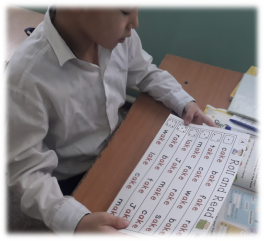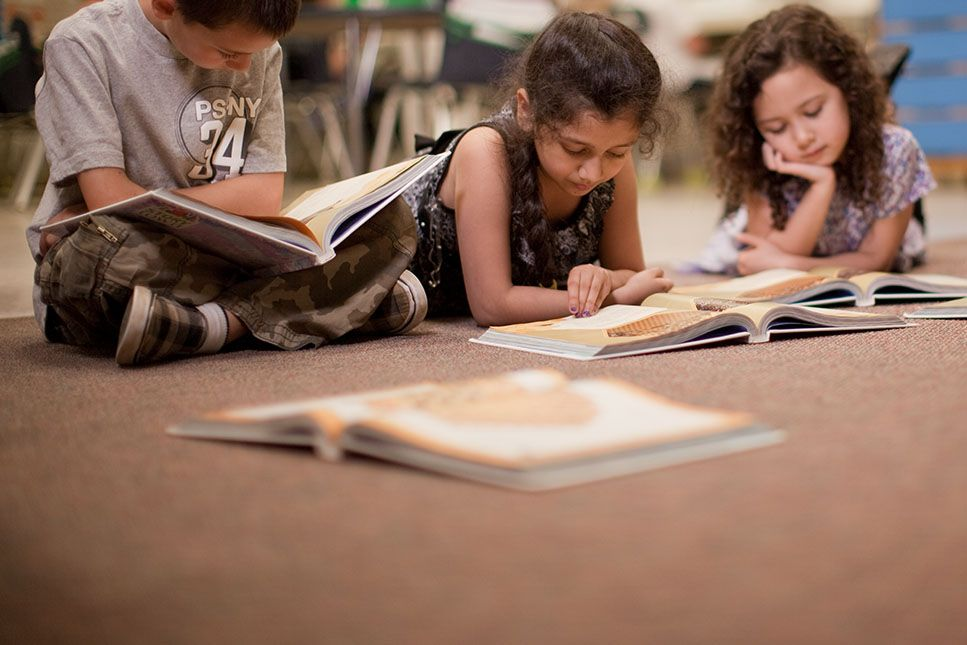Functional sub-skills of
reading in English lesson
The
aim: “
Effective methods and
methods of formation of learning literacy of students in foreign
language classes.”
Improving students' functional
literacy is the main part of the educational process. Educating the
future generation to be competent is indicated in the national
action plan for the development of functional literacy of
schoolchildren in Kazakhstan, which provides for the development of
students' competence skills and the ability to effectively use the
knowledge they have acquired in real life
situations. According
to Joseph
Addison
said “Reading is to the mind, what exercise is to
the body.” Reading is one of the main
skills that a pupil must acquire in the process of mastering a
foreign language in school. Reading is about understanding written
texts. It is a complex activity that involves both perception and
thought. Reading consists of two related processes: word
recognition and comprehension. Word recognition refers to the
process of perceiving how written symbols correspond to one's
spoken language. Comprehension is the process of making sense of
words, sentences and connected text. Learners get acquainted with
countries where the target language is
spoken.
As you know in English lesson
we’ve used 4 sklls of learning languages with new methods of
teaching. Listening,reading, writing and speaking. I choose the
reading skills for learners because of “reading skill” is more
important to learn languages and other 3 skills very close connect
with each other. With reading skill learners concentrate to the
words and its word order embedding and try to point attention to
the meaning of words and translations.
Reading develops pupils'
intelligence. It helps to develop their memory, will, imagination.
Pupils become accustomed to working with books, which in its turn
facilitates unaided practice in further
reading.
In the classroom learners
spend time developing a wide range of sub-skills as they build each
of the four skills. Amongst the sub-skills focussed on
are scanning and skimming in reading,
organisational and editing skills in writing, recognition
of intensive and understanding gist
in listening, and pronunciation and extensive in
reading..
What are the four types of
reading skills?
Following are the kinds of
reading.
1-
Skimming
Skimming means to go through
the text quickly to grasp the overall meaning or gist of it. It is
to extract the main theme or the core of the text by a quick
reading process. The reader does not pronounce each and every word
of the text, rather he focuses his attention on the subject matter,
an overall view of the text,
2-
Scanning
The sub-skill of reading by
which the reader collects a particular information from the given
text is known as scanning. The technique of scanning involves the
ability to reject or ignore irrelevant information. In order to
locate a specific piece of information, the reader has to go
through the text quickly and focus his attention on the relevant
part of the text.
3 – Extensive
Reading
This kind of reading emphasis
less on accuracy and more on gaining fluency. It is done out of the
classroom and meant for reader’s own
pleasure.
4– Intensive
Reading
Intensive reading is the close
reading of a short text. It is a kind of reading that aims at
accuracy of comprehension. It involves the reader in great
attention to detail. Here, the reader has to learn the meaning of
each and every word. It is considered a useful tool of learning a
foreign language.”
In continuation of this I want
to add there are different exercises for each subskills and it
helps to develop each types of reading skills. For
example:
Intensive
Reading
-
Setting the
context
-
Who said
that?
-
Create a
timeline
-
Retell the
story.
Extensive
Reading
-
Read
aloud
-
Add misspelled
words
-
Reading
race
-
Find and use new
words
Skimming
-
Summarize the given
text
-
Give main points of the
text
-
Rewrite the subject matter in
your own word.
-
Give a suitable title to the
given passage
-
Extract the central idea of
the text
-
Such questions indicate that
skimming is like global listening
Scanning
Teaching reading is very
important, because it helps to develop others skills: speaking and
writing. This theme is very relevant, because sometimes in school
teachers don't develop this skill right way, and spare a little
time for it.
Today I want demonstrate you
about how I used effective ways to build reading skill in my
lessons. I teach form 2-6-7 grades in my school this year. At first
I divided into three groups of my learners: Low-average-adult
groups; Low is primary class: Average is lower secondary and adult
is upper secondary learners.
In this regard, I use the
following learning techniques in my class, depending on each group,
and I want to show them.
Reading skills
Techniques
For example: for low group I
prepare such as strategies of
reading:
-
Phonetic
drill
-
Circle same
words
-
Reading by
syllables
-
Spelligator
-
Parent
reading
for average group I prepare such as
strategies of reading:
-
Mind map
-
Building Text
Challenge
-
Speed reading
-
Half words
-
Spiral
reading
for adult group I prepare such as strategies
of reading:
Here you can see my students which use of
some reading techniques.






Also you can use this web pages in your
reading time. Here you can find different foreign books with sound
pronunciations.
Epic
4kids.com
https://www.getepic.com/app?section=read-to-me
https://learningapps.org/13101451
Nowadays, reading is one of
the most important skills, but not many people read books.
therefore, teaching children to read from an early age teaches them
to critically think about their future, to seriously solve the
upcoming difficulties, and to achieve their
goals.
Feature of the
method-Reading is an essential skill
for language learners. When your reading skills improve, your
listening, speaking and writing skills improve too. Reading is the
best way to learn and remember the proper spelling of
words.
Effective use of innovative
methods- Being able to effectively
use the above-
mentioned methods in the
classroom is a way to develop the child's reading skills. That is,
through reading, the student can express his thoughts freely,
improve his speech culture, and learn all skills effectively
through reading. As a result, enthusiasm for lessons increases and
interest in learning increases.
School №
17


Theme: Functional sub-skills of
reading in English lesson
Turymbaeva
Aliya
2024 y
One word
stories
This is a simple activity
where each student adds a word to create a group
story.
Despite the simplicity it can
be really challenging and I would only use it with higher
levels.
-
Students should be in a circle
(if this isn’t possible make it clear they know who they are going
to follow on from). The teacher can begin by saying the first word
and each student adds the next word, without repeating what has
come beforehand.
-
Good starting words are
'Suddenly' or 'Yesterday' to force the story into the past tense.
It is great for highlighting word collocations and practising word
order. It also highlights problems students may have with tenses or
prepositions for you to focus on in future
classes.
-
The stories can develop in any
number of ways. Some groups may need the teacher to provide
punctuation and decide that the sentence should end and a new one
should begin. The great thing about this activity is that all
students have to concentrate and listen carefully to their
colleagues to be able to continue the story
coherently.
Example
Shadow reading
This activity uses a text from
the course book, and involves listening and pronunciation practice.
This task is challenging and motivating and can be used at any
level.
Teacher reads the text aloud
and students follow, marking the text for
stress
Teacher reads the text a second
time and the students mark for linking
Individual chunks that show
good examples of linking or problematic pronunciation can then be
drilled
Students practise these aspects
of pronunciation by reading the text to themselves before the
teacher reads the text aloud again and they
listen
Then the students read the text
with the teacher and they have to start and finish at the same time
as the teacher, who reads the text at normal
speed
This works well after
some exposure to the rules of pronunciation - connected speech,
stress and intonation.















